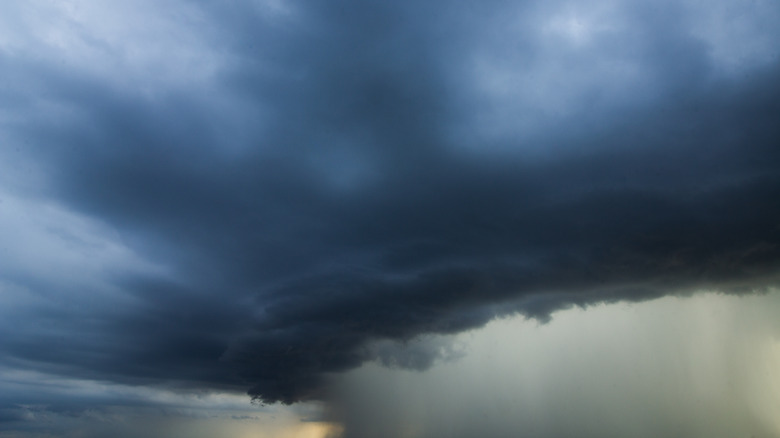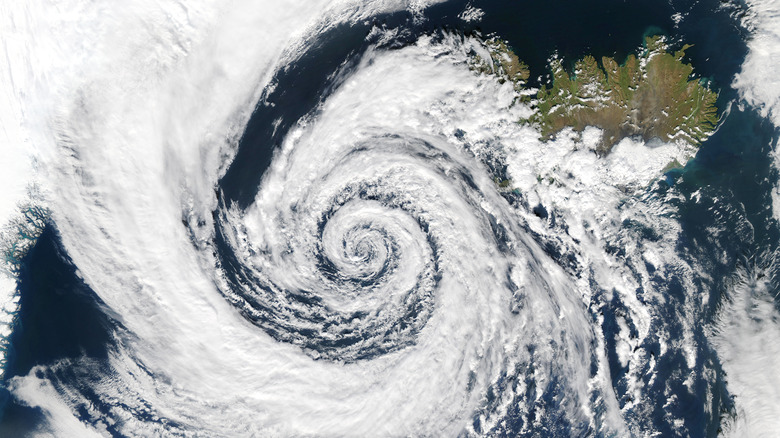The Truth About The Deadly 1839 Coringa Cyclone
Coringa is a small village on the southeastern coast of India that was once a large, bustling port city in the 18th and 19th centuries. In 1789, the city was struck by a brutal cyclone that claimed the lives of around 20,000 people (via Hurricane Science). The city was left devastated, but was not completely destroyed, and was able to rebuild over the years. Tragically, that disaster would be dwarfed just half a century later.
On November 25, 1839, another cyclone struck the recovering city. The Bay of Bengal, where Coringa is located, is no stranger to natural disasters and flooding, accounting for seven of the 10 deadliest tropical storms in recorded history. The cyclone that struck Coringa was strong even for that area, tied as the third-deadliest cyclone in history and the sixth deadliest natural disaster outright, according to Livescience. The destruction and loss of life nearly wiped the entire port off the map, and to this date, only a modest hamlet exists on the site, a shadow of the city from centuries past.
Around 300,000 lost their lives in the storm
The exact force and category of the storm will never be known as wind speed measurements were uncommon before the 20th century. What was recorded was the storm surge, which rose to a staggering 40 feet and engulfed the entire city. It decimated both the port's populace and livelihood. 20,000 ships in the harbor were destroyed along with 300,000 lives, tying it with the 1881 Haiphong typhoon as the sixth-deadliest natural disaster in recorded history.
The storm and its 1789 predecessor were studied by Henry Piddington, an officer of the British East India Company. He noted the circular patterns in the winds and clouds, and in 1840 coined the term "cyclone" for this type of tropical storm. The term is still used today for storms that form in the Indian Ocean and Southern Pacific. The city of Coringa was never rebuilt, with many survivors choosing to settle further inland. Today, according to India.com, the area is popular with tourists due to the nearby turtle sanctuary, but there is little to suggest that a massive port once stood there not too long ago.

